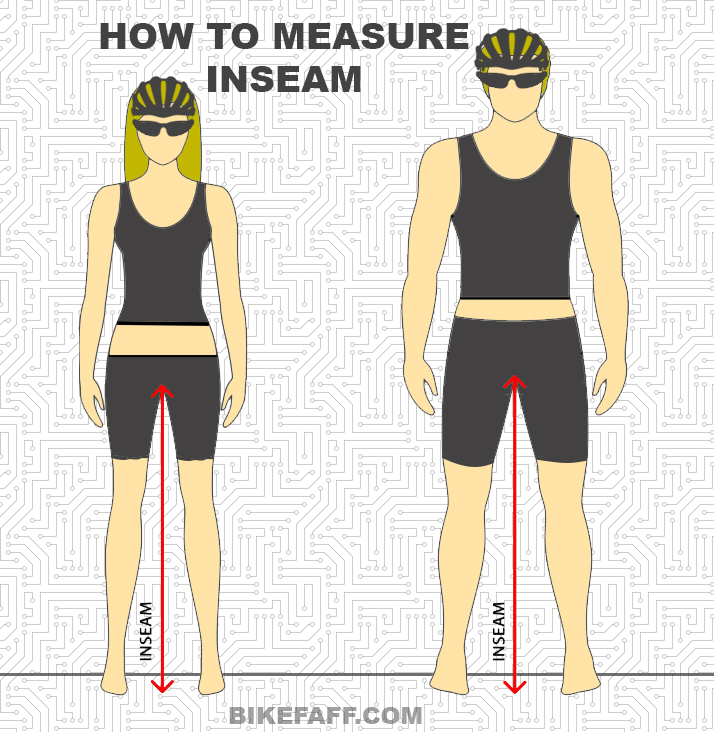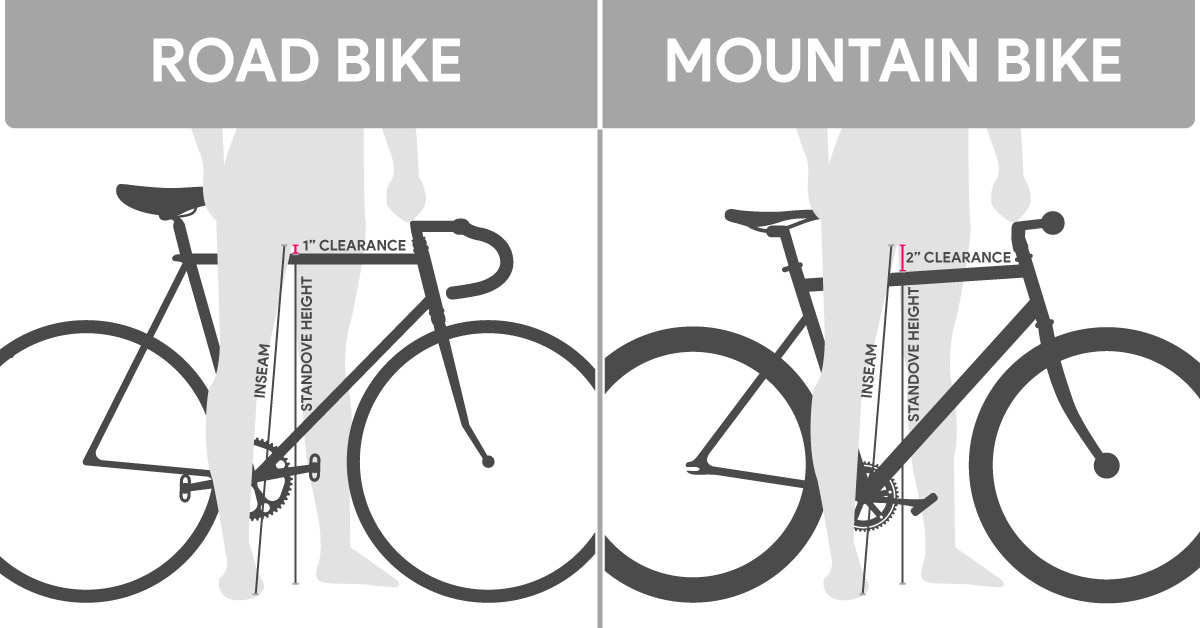Understanding the Importance of Bicycle Frame-to-Height Proportions
Selecting the appropriate bicycle frame size based on a rider’s height is crucial for achieving optimal comfort, efficiency, and injury prevention. The perfect frame-to-height ratio ensures that the rider’s body is correctly positioned, reducing strain on muscles and joints. This, in turn, enhances the overall cycling experience, making it more enjoyable and rewarding.
A properly sized bicycle frame allows for a natural and biomechanically efficient pedaling motion. It reduces the risk of overuse injuries, such as knee pain, and enables the rider to maintain a comfortable posture during long rides. Conversely, a poorly sized frame can lead to discomfort, decreased performance, and potential injuries, negatively impacting the rider’s experience and enjoyment of cycling.
In essence, finding the ideal bicycle frame-to-height ratio is an essential aspect of selecting the perfect bicycle. By understanding the significance of this relationship and following the guidelines outlined in this comprehensive guide, riders can ensure a safe, comfortable, and enjoyable cycling experience tailored to their unique needs and preferences.
Measuring Your Inseam Length: The Key to Determining Your Ideal Frame Size
To find the perfect bicycle frame-to-height ratio, you must first determine your inseam length. This measurement is crucial as it directly correlates with the ideal bicycle frame size for your height. By following these simple steps, you can accurately measure your inseam length:
- Stand against a wall with your feet approximately six inches apart.
- Place a hardcover book or a ruler between your legs, pressing it into your crotch area, simulating the saddle of a bicycle.
- Ensure the book or ruler is level and parallel to the floor.
- Have a friend or family member measure the distance from the floor to the top edge of the book or ruler.
This measurement, in inches or centimeters, represents your inseam length. Once you have determined your inseam length, you can use it to calculate the ideal bicycle frame size for your height. Various frame size charts are available online, which can help you find the perfect frame size based on your inseam length and riding style.
By measuring your inseam length and using it to determine the ideal bicycle frame size, you can ensure a comfortable and efficient cycling experience tailored to your unique needs and preferences. This crucial step in selecting the perfect bicycle frame-to-height ratio is the foundation for a safe, enjoyable, and rewarding cycling journey.
How to Adjust Your Bicycle Seat Height for a Comfortable Ride
Proper seat height adjustment is essential for achieving optimal comfort, efficiency, and injury prevention while cycling. By following these steps, you can determine the perfect seat height based on your leg extension:
- Mount your bicycle and place your heels on the pedals.
- Slowly pedal backward, ensuring that your legs fully extend during the pedal stroke.
- Your knee should be almost, but not quite, fully straight at the bottom of the pedal stroke.
- Disembark from your bicycle and, while standing, measure the distance from the ground to the top of the saddle.
- Compare this measurement to a bicycle frame size chart to ensure that your seat height aligns with the recommended frame size for your height.
Alternatively, you can use the “LeMond Method” to determine your seat height. This method involves multiplying your inseam length by 0.883 to calculate the ideal saddle height in centimeters. For example, if your inseam length is 81.3 centimeters (32 inches), your saddle height should be approximately 72 centimeters (28.3 inches).
Proper seat height adjustment is crucial for ensuring a comfortable and efficient cycling experience. By following these guidelines, you can achieve the perfect seat height and enjoy the benefits of optimal comfort, efficiency, and injury prevention.
Selecting the Right Frame Material for Your Height and Riding Style
Bicycle frame materials significantly impact the overall performance, comfort, and durability of a bicycle. Understanding the properties of various materials can help you select the perfect frame for your height and riding style.
Aluminum
Aluminum frames are lightweight, strong, and cost-effective. They are an excellent option for riders of all heights, offering a responsive ride quality and good value for money. Popular aluminum bicycle frames include the Trek Domane AL and the Giant Defy AL.
Carbon Fiber
Carbon fiber frames are known for their exceptional stiffness, lightweight, and vibration-dampening properties. They are ideal for taller riders seeking a high-performance, comfortable ride. Popular carbon fiber bicycle frames include the Specialized S-Works Tarmac and the Cannondale SuperSix EVO.
Steel
Steel frames are durable, comfortable, and offer a classic, timeless aesthetic. They are suitable for riders of all heights, providing a smooth, compliant ride. Popular steel bicycle frames include the Surly Long Haul Trucker and the Soma Double Cross.
Titanium
Titanium frames are lightweight, corrosion-resistant, and offer a unique blend of stiffness and compliance. They are an excellent option for riders seeking a high-performance, long-lasting frame. Popular titanium bicycle frames include the Moots Routt RSL and the Litespeed T5gr.
By considering the unique properties of various frame materials, you can select a bicycle frame that caters to your height and riding style, ensuring optimal comfort, performance, and durability.
Popular Bicycle Frame Geometries and Their Impact on Rider Comfort
Bicycle frame geometry plays a significant role in determining rider comfort and performance. Understanding the various frame geometries available can help you select the perfect bicycle for your height and riding style.
Endurance Geometry
Endurance geometry bicycles prioritize comfort and stability, making them an excellent option for long-distance rides and riders seeking a more relaxed riding position. These bicycles typically feature a longer wheelbase, slacker head tube angle, and taller stack height, which contribute to a more upright riding position and increased stability. Popular endurance geometry bicycles include the Trek Domane and the Specialized Roubaix.
Racing Geometry
Racing geometry bicycles are designed for speed and agility, making them an ideal choice for competitive cyclists and riders seeking a responsive, aerodynamic ride. These bicycles typically feature a shorter wheelbase, steeper head tube angle, and lower stack height, which contribute to a more aggressive riding position and quicker handling. Popular racing geometry bicycles include the Cannondale SuperSix EVO and the Giant TCR.
Touring Geometry
Touring geometry bicycles prioritize comfort, durability, and versatility, making them an excellent option for long-distance tours and loaded rides. These bicycles typically feature a longer wheelbase, slacker head tube angle, and lower bottom bracket, which contribute to a stable, comfortable ride. Popular touring geometry bicycles include the Surly Long Haul Trucker and the Kona Sutra.
By considering the unique properties of various bicycle frame geometries, you can select a bicycle that caters to your height and riding style, ensuring optimal comfort, performance, and enjoyment.
Considering Additional Factors: Reach, Stack, and Standover Height
In addition to frame size, seat height, and frame material, there are other important factors to consider when selecting the perfect bicycle frame-to-height ratio. These factors include reach, stack, and standover height, which can significantly impact rider comfort and performance.
Reach
Reach refers to the horizontal distance between the center of the bottom bracket and the top of the head tube. A longer reach results in a more aggressive, stretched-out riding position, while a shorter reach results in a more upright, comfortable position. When selecting a bicycle frame, consider your flexibility, riding style, and desired riding position to determine the ideal reach.
Stack
Stack refers to the vertical distance between the center of the bottom bracket and the top of the head tube. A taller stack results in a more upright, comfortable riding position, while a shorter stack results in a more aggressive, aerodynamic position. When selecting a bicycle frame, consider your flexibility, riding style, and desired riding position to determine the ideal stack.
Standover Height
Standover height refers to the distance between the ground and the top tube of the bicycle frame. A lower standover height allows for easier dismounts and greater clearance, while a higher standover height may require more flexibility and balance. When selecting a bicycle frame, consider your height, flexibility, and riding style to determine the ideal standover height.
By considering reach, stack, and standover height, in addition to frame size, seat height, and frame material, you can ensure a comfortable, efficient, and enjoyable riding experience tailored to your unique needs and preferences.
Frequently Asked Questions About Bicycle Frame-to-Height Ratios
Selecting the perfect bicycle frame-to-height ratio can be a complex process, and many riders have questions and concerns about finding the ideal fit. Here, we address some of the most common questions about bicycle frame-to-height ratios.
What if I’m between frame sizes?
If you find yourself between two frame sizes, consider several factors, such as your flexibility, riding style, and comfort. A smaller frame may offer a more agile and responsive ride, while a larger frame may provide greater stability and comfort. You can also consider a frame with a more adjustable or customizable fit, such as a frame with a sliding dropout or adjustable seatpost. Alternatively, you can consult with a professional bike fitter for personalized advice and recommendations.
Can I adjust my frame size after purchase?
In some cases, you can make minor adjustments to your frame size after purchase. For example, you can adjust your saddle height, stem length, or handlebar height to fine-tune your fit. However, if you find that your frame size is significantly off, it may be more challenging to make meaningful adjustments. In such cases, it may be necessary to consider a different frame or bike altogether.
By addressing these common questions and concerns, we hope to provide helpful solutions and guidance for riders seeking the perfect bicycle frame-to-height ratio. Remember that finding the ideal fit is a personalized process, and what works for one rider may not work for another. Take the time to consider your unique needs and preferences, and consult with professionals and resources as needed to ensure a comfortable, efficient, and enjoyable riding experience.
Maintaining Your Bicycle Frame: Ensuring Long-Term Durability and Performance
Proper maintenance is crucial for ensuring the long-term durability and performance of your bicycle frame. By following these tips and best practices, you can keep your frame in excellent condition and enjoy many miles of comfortable, efficient, and safe riding.
Cleaning Your Frame
Regularly cleaning your bicycle frame is essential for removing dirt, grime, and debris that can accumulate over time. Use a mild detergent and warm water to gently clean your frame, avoiding high-pressure washers or abrasive materials that can damage the paint or frame material. Dry your frame thoroughly after cleaning to prevent rust or corrosion.
Storing Your Bicycle
Proper storage is crucial for protecting your bicycle frame from damage and wear. Store your bicycle in a cool, dry, and well-ventilated area, away from direct sunlight or extreme temperatures. Use a high-quality bicycle stand or rack to keep your bicycle upright and stable, and consider using a bicycle cover to protect your frame from dust, dirt, and moisture.
Protecting Your Frame
Taking steps to protect your bicycle frame from damage can help ensure its long-term durability and performance. Use frame protectors or guards to prevent scratches, dents, or other damage from rocks, debris, or impacts. Avoid carrying heavy loads or attaching unnecessary accessories to your frame, as these can strain or weaken the frame material over time.
By following these tips and best practices, you can maintain your bicycle frame effectively and ensure its long-term durability and performance. Regular cleaning, proper storage, and protective measures can help prevent damage, wear, and corrosion, and keep your bicycle frame in excellent condition for many years to come.








